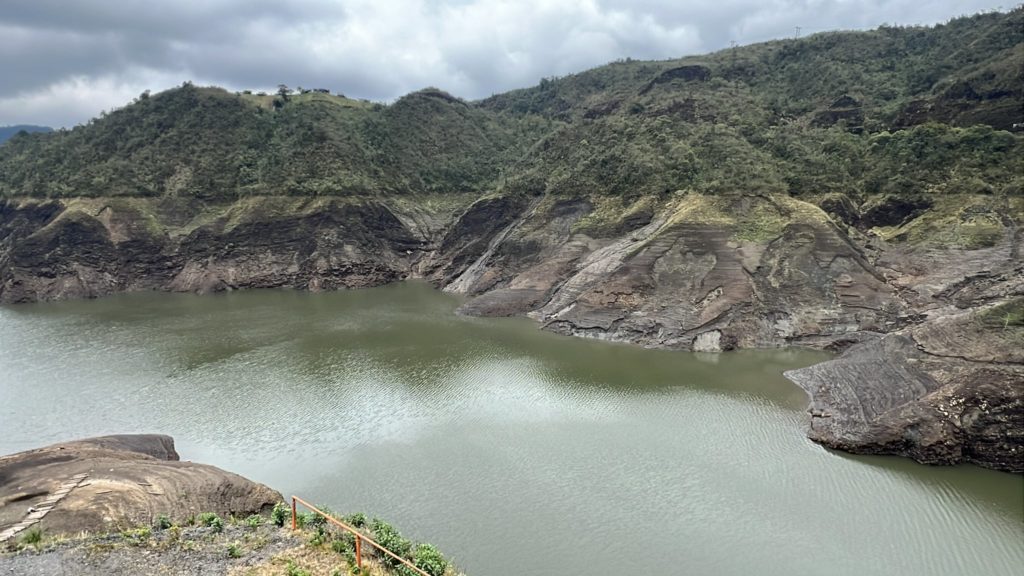
The announced water rationing in Bogota will involve cuts of up to 24 hours per sector in the Colombian capital, starting on Thursday, April 11. The reservoirs that provide water to the city are at critical levels due to the El Nino phenomenon, as warned by the Mayor’s Office last week.
Mayor Carlos Galan insisted that today, after six months of drought, there is no capacity to meet the demand of citizens. Although in January consumption was reduced from 18 cubic meters per second to 17, the low rainfall and the situation of the Chingaza reservoir, which is not at even 17% of its capacity, forced the administration to adopt an unusual measure in Bogota.
This water rationing situation is expected to reduce consumption to 15 cubic meters per second. The measure will be extended until the minimum operational level of the reservoirs has been recovered.
24-hour outages
The mayor of Bogota, Carlos Galan, explained this morning that the water cuts will be carried out according to sectors. The capital has been divided into nine sectors, each of which will suffer water service cuts for 24 hours, starting at eight o’clock in the morning, every ten days. In other words, the cut will occur three times a month.
The zones were not delimited by localities, but by aqueduct networks, in order to be able to control the supply of the whole territory. The restrictions also affect several municipalities adjacent to Bogota, depending on the shift established by the Water Company.
With this major decision, the Mayor’s Office expects to save 2,000 liters of water per second and thus stop the decrease in water reserves in the reservoirs, especially in the Chingaza from which water is supplied to 70% of the city. “This is thinking not only about what is going to happen in the coming months, but also about next year. We have to reach the end of the year with reservoirs at 75% of their level to be guaranteed that we will be able to meet next year’s water demand,” said the mayor.
The town of Usme, one of the twenty that make up Bogota, will not suffer water supply restrictions. This is because this area in the south of the capital does not draw water from the Chingaza reservoir, which is the reservoir in a critical state.
No heavy rainfall forecast
Although the rainy season started at the end of March, that month was extraordinarily dry. The rains that have fallen in the first week of April have been equally insufficient and during this second week no improvement is expected. It was reported that it would not be until the end of this month that more substantial rain would arrive.
However, the reality does not allow for optimism, since the exceptional nature of the El Nino phenomenon and the evident lack of foresight of the authorities has left the capital of the country having to suffer measures that affect the daily life of the citizens.
The reservoirs are at their lowest levels since the current system came into operation forty years ago. In 1984, Bogota had just over four million inhabitants. Today, four decades later, the capital city has almost doubled to eight million. The reservoir system, however, is the same.
The message from the Mayor’s Office is to “change habits” in water consumption, with the aim of not “wasting a drop”. In Bogota, as in the rest of the cities in the country, it is common for buildings and residential complexes to have water tanks that allow them to avoid short-term water cuts. In this regard, the authorities have also urged people to avoid storing water.
“If they start storing a lot of water we end up preventing the reduction in consumption that will allow us to reduce the restrictions, so we will not achieve the objective, and eventually, if consumption does not go down, we will have to maintain the restrictions and make them even more restrictive,” said Mayor Galan.
See all the latest news from Colombia and the world at ColombiaOne.com. Contact our newsroom to report an update or send your story, photos and videos. Follow Colombia One on Google News, Facebook, Instagram, and subscribe here to our newsletter.

